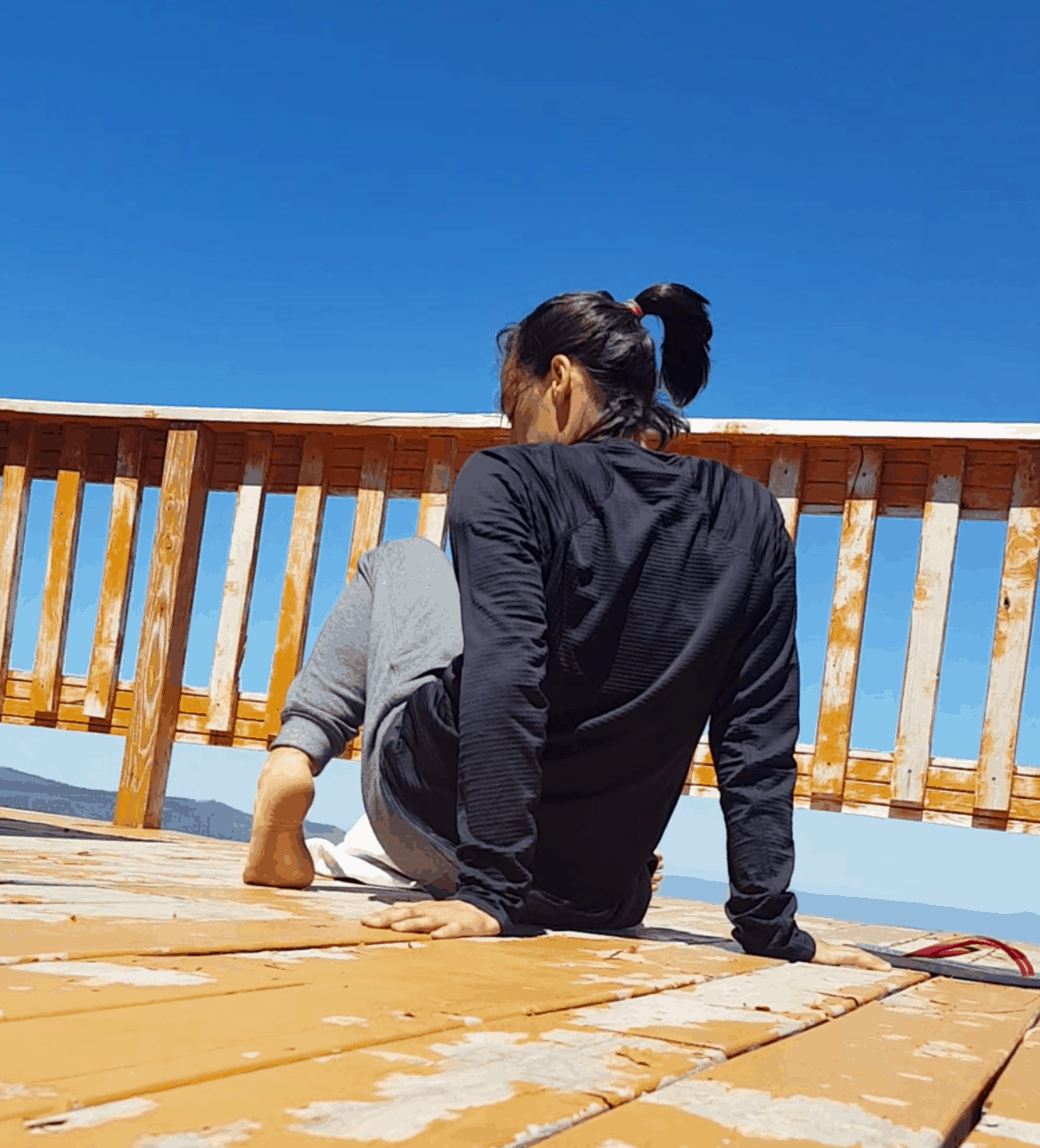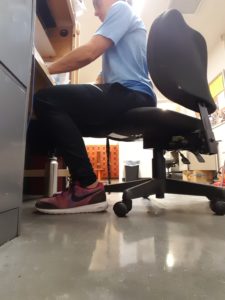
The Heel and the Knee
When assessing the lower leg, it has become common place to examine the foot. The pliable and separable toes receive much of the attention. The heel, strange and seemingly uninteresting, gets neglected. Considering the calcaneous is a starting point of the posterior chain, anything calf or hamstring related could find causation (or at least influence) there.
The following is how a tight calf led to a stuck knee that was sourced to a locked heel.
A deep, dull stiffness occupied my left calf for about a month. I thought it just might need some stretching, but the relief was only temporary. Furthermore, I noticed that it really tensed up after sitting at my desk for a prolonged period of time. My table is low and my chair must be shortened to fit under it. When the foot was slid back and the heel stayed flat, I had trouble walking for a few steps.

The knee didn’t want to extend and almost felt like it was ‘catching’ on something through the backside. A searing flash of pain shot up my foot through the middle of my knee as I placed weight on it, shortening my normal gait to a cautious one. Within ten or so steps the tingling subsided, but the random intensity in which it plagued me kept me searching for answers.
I found that if I got just the right ‘shake’ I could alleviate the discomfort immediately, and the reprieve lasted until I sat or crouched again:
First clip here. Note that there is a relaxation and post-convulse reverberation that happens at the heel, rather than starting and staying at the ankle.
Since the seated position had knees and hips flexed, I used a similar arrangement to compare lateral compliance of the heel, finding much more plasticity available on my right:
The theme became finding ways to to free up and them utilize actions of the heel.
I looked at rotation, particularly internal rotation (through inversion), since my hips tend to splay externally:
I then used this inverted ‘joystick’ move to pivot upon the heel, loading those rotational weaknesses:
Note the difference between the first two (toe led) and third toe points. The foot should remain relaxed and be pushed in the desired direction by shifting the body over the heel (hence the joystick description). Again, internal rotation was most difficult to work with and tended to cause discomfort through my knee. Regarding external rotation, figure-fours were much less resistant to open up the hip when the anchor was the heel instead of the midfoot.
Most impressive, though, is that weighted hip extension actually became easier when I lengthened the back side and pointed versus pulled back on the toes:
Once the contractions of the plantarflexion was made, they stayed engaged and ‘righted’ the lift once dorsiflexed.
Upon waking, I noticed that my relaxed body and heel (lightly loaded because of the softness of the bed) could get the knee to ‘pop’ pleasantly by rotating the knee inward:
I could replicate this movement and result for about two weeks.
As tensions eased and the knee started feeling like normal, I took this helpful tactic and wondered how making it more dynamic might make things feel. The legs felt looser and much less limited afterward:
Out of danger and issue for now, I continue playing with these ‘solutions’. In doing so, I am more aware of what my heel is doing in the context it is placed within. Perhaps this consciousness was the lesson to be learned. There will always be problems to solve and progress to make, but as Gray Cook said, “where you think it is, it [usually] ain’t”. This challenge is an invitation to look elsewhere and pay attention. There is more of you to know and more connections to discover.



